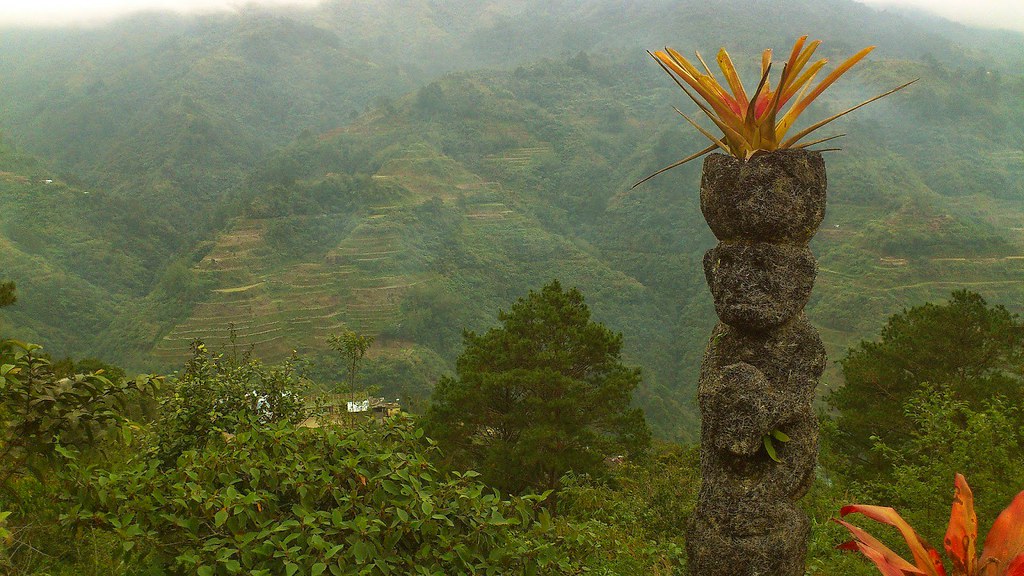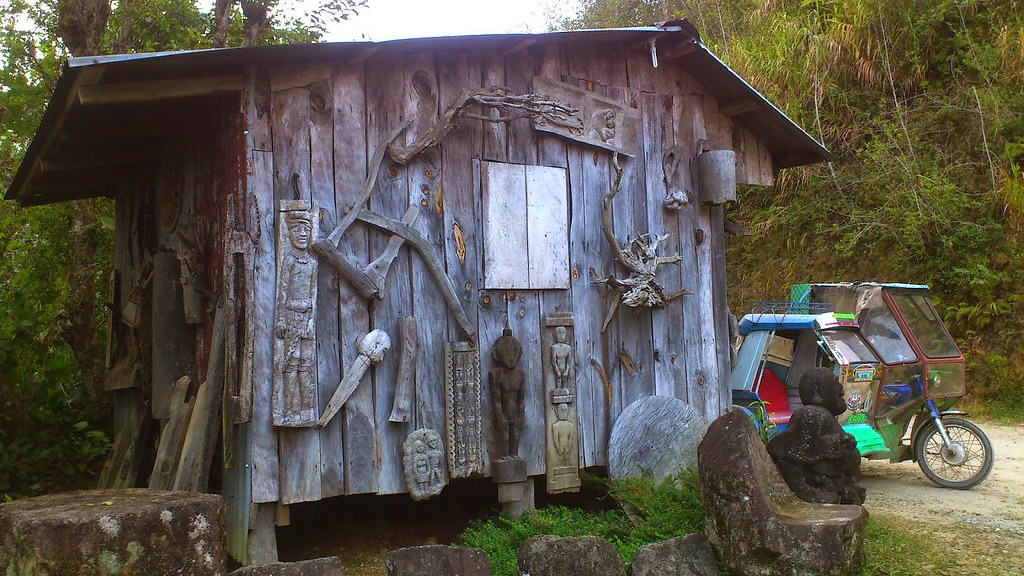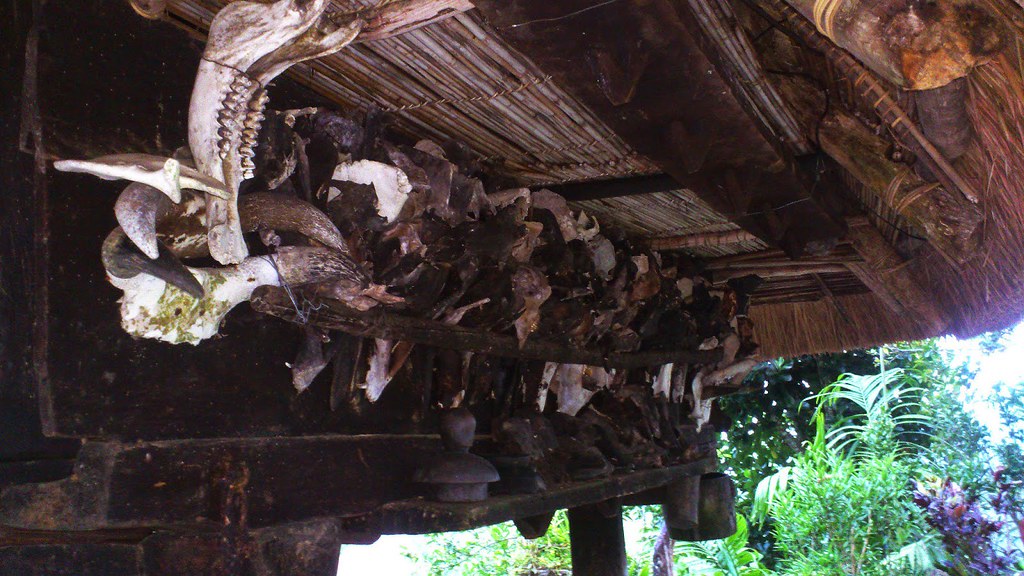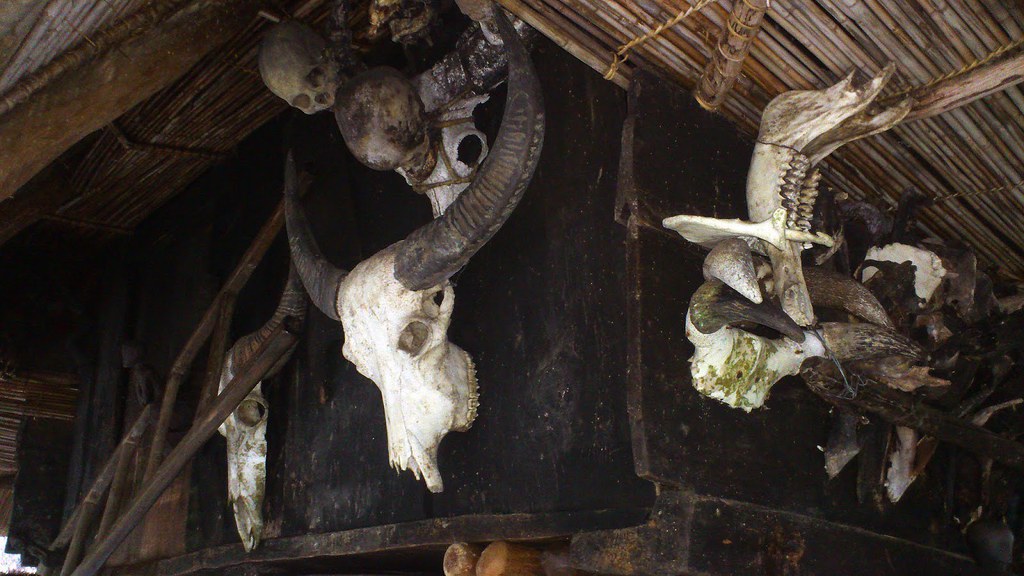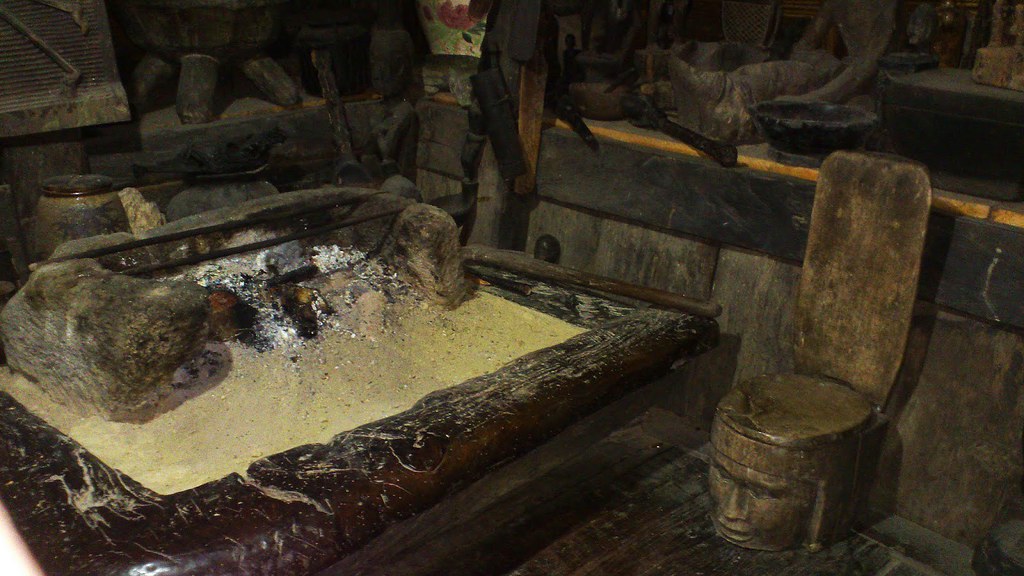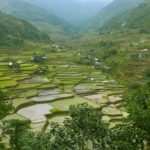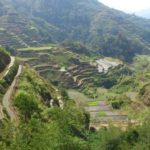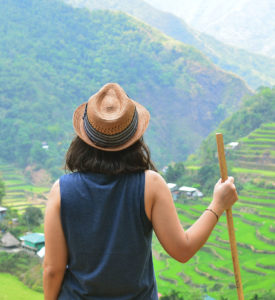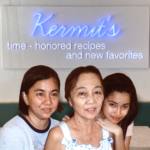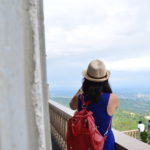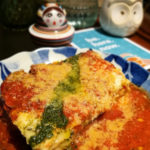If you happen to be visiting the Mountain Province, you should explore an Ifugao village.
Our tour guide slash tricycle driver, Kuya Benson Tid-ong was kind enough to pick us up from Stairway Lodge at 5 pm for a quick trip to Hiwang Village. We were tired from our stressful journey in Hapao and we spend most of the morning sleeping and charging our gadgets since it is an extra day in Banaue. Kareen made sure we have an extra day in case we cannot make it back on schedule.
It took 30 minutes for our tricycle to venture up the mountains to reach Hiwang Village in Hiwang Gohang, Banaue. As dusk caresses the mountains, fog gently descends to the ground, shrouding the magnificent view of the rice terraces. Hence, the bad quality photos.
Kuya Benson gave us a quick ocular tour around the huts before the fog fully envelopes the area. We noticed a lot of rice guardians made of some kind of hard husk dotted around the area. Some, even sporting a flower as a headdress, some caught in a frozen scream like Edvard Munch’s painting. This just shows how rich the Ifugao people are with their culture, pagan beliefs and their awesome green terraces that they continue to preserve.
An elderly man in a thick jacket was standing near one of the two Ifugao houses in the parking area came up to us as we head back from our brief ocular. Kuya Benson greeted him and spoke in Ifugao. The man introduced himself as Noel Balega, the caretaker and owner of the Hiwang Native House Inn and Viewdeck. He said that we came at a good time because it stopped raining three days ago.
Noel is a chatty host, he shared that the village is over 250 years old. They change the cogon roof every 14-15 years since cogon is very expensive and hard to acquire. Notable people and Filipino celebrities stayed at one of the Ifugao huts in Hiwang Village.
Most locals prefer to speak English than Filipino, like our host. Even the elderly Igorots at the viewing decks can only speak their dialect or English.
Noel opened one of the huts and laughed at our hesitancy, undecided to climb in. It was getting dark and he has to turn on one of the lights so we can gaze in wonder at his collection of Ifugao wood art.
Kareen and I immediately start taking close up shots of the wooden bululs and sculptured rice gods. Noel mentioned these were made by some artists in the Cordillera region and unfortunately, we only know National Artist Ben Cab or Benjamin Cabrera who lives in Baguio (and no, we failed to visit his museum but I met the guy in person 4 years ago when he did an exhibit in Cebu with painter and curator, Aman Santos).
I asked Noel about the little statues littered all over the place, he explained those are rice gods and he gestured to one of the sculptures near me that looks like a small fat and pregnant monkey–a fertile god. Anyone to touches the statue is believed to conceive a child. Before you ask, there’s no statue believed to give a blessing to find a partner.
Noel shared the stories behind the decorative skulls hung outside the huts. As we encircled the hut, there are two human skulls. He explained they were skulls of unfortunate Japanese soldiers. Poor Jap guys, they were probably captured, chosen to be beheaded for trespassing or whatever and presented as trophy skulls to the chieftain.
Rowena, the tourism lady who helped us in Hungduan, explained that skulls are symbols of prestige indicated that the person living in the hut practices rituals. I am disappointed that harvest and thanksgiving rituals are only practiced at present. I was hoping to witness a wedding ritual.
In olden times, inter-tribal wars are frequent. Ifugao forefathers think that war will solve everything. Practice dictates that during the headhunting, they bring the captives to the tribal chieftains. They behead the unfortunate captives (most of the time are criminals) and skewered the heads on bamboo spears or poles a la head-kebab. The bloody heads were then brought to the dap-ay (which is their communal area that serves as the elders’ meeting ground). The dap-ay looks like an altar of small garden algae-covered bululs grouped together. It reminds me of Frozen’s love expert’s place. After presenting the heads in their bloody glory, they celebrate for two days with food and rice wine.
After two days, the poor heads were buried under the ground for the skin to rot; then they party again. Two years after, they unearth two nice smooth dirty skulls then have a party again. Them Ifugao ancestors, they love to party and know how to throw them. The celebration ritual is called cha-long or something that sounds like it.
I wanted to listen to Noel more but darkness slowly descends the place accompanied by chorus of cicadas and we said our goodbyes. Kuya Benson explained in his native tongue that we need to head back to Banaue Trade Center and en route we need to find the souvenir shop who sold us the Ifugao native skirt. Buying an Igorot skirt is part of the itinerary and we cannot leave Banaue buying one.
Noel thanked us and told us to come back during harvest to witness tribal practices such as thanksgiving rituals. The best time to visit Banaue is from October to November during the harvest time. April to May is their planting season.
If you want to read more about the head-hunting ritual, here’s an excerpt from The Bontoc Igorot by Albert Ernest Jenks, release date: March 18, 2005 [EBook #3308].
Noel Balega
Hiwang Native House Inn and Viewdeck
+63 926 434 3030 / +63 918 240 3464

